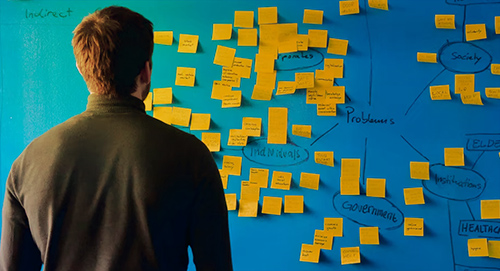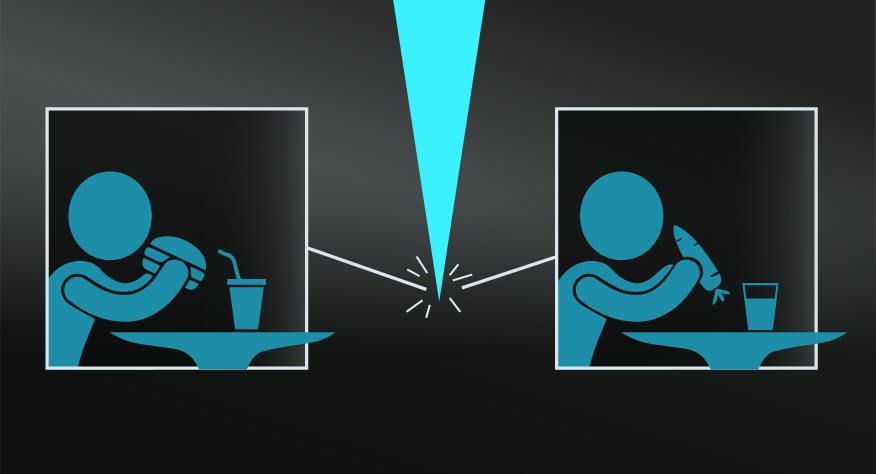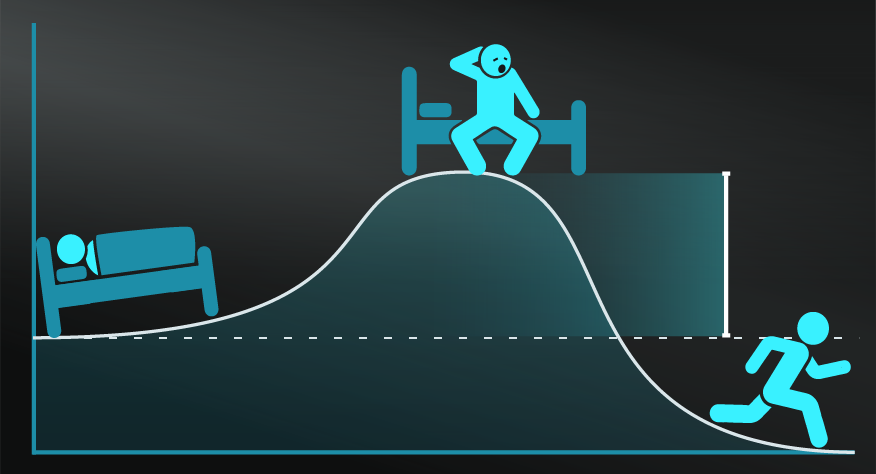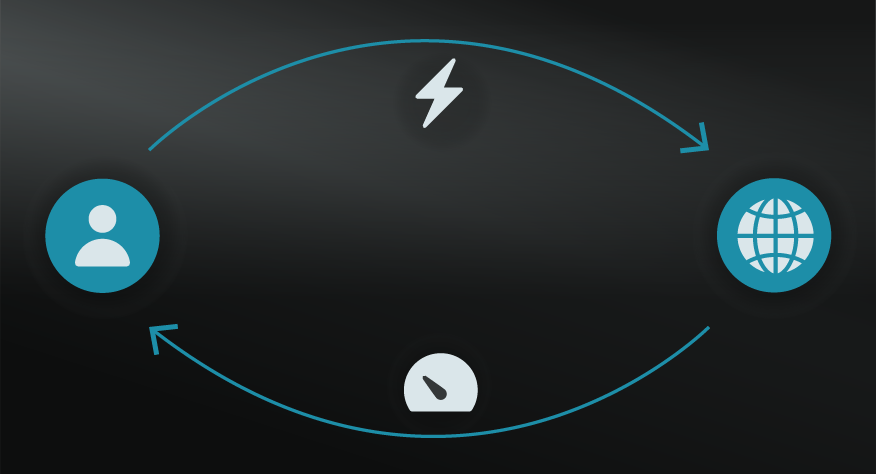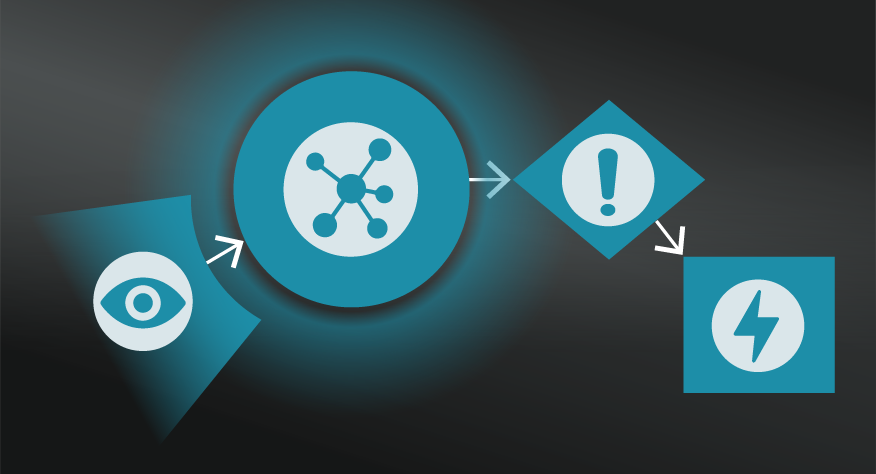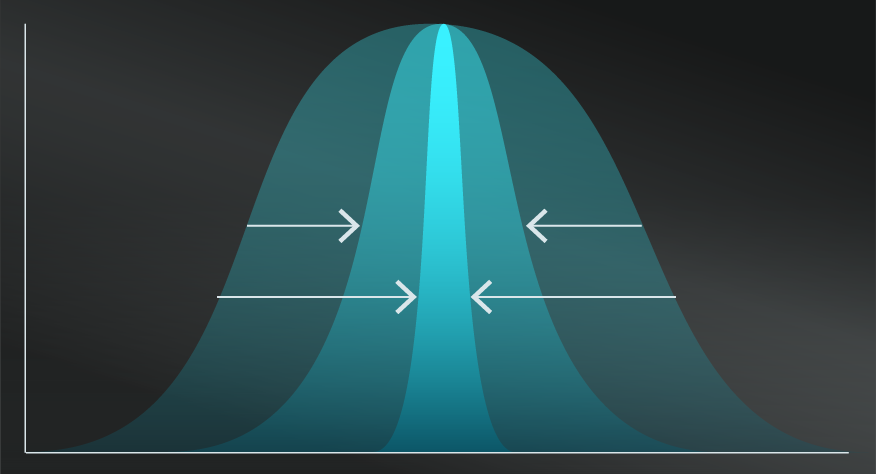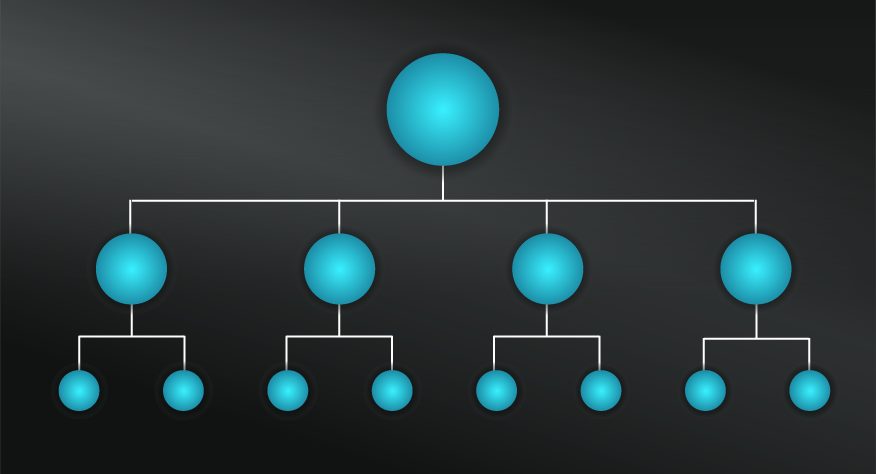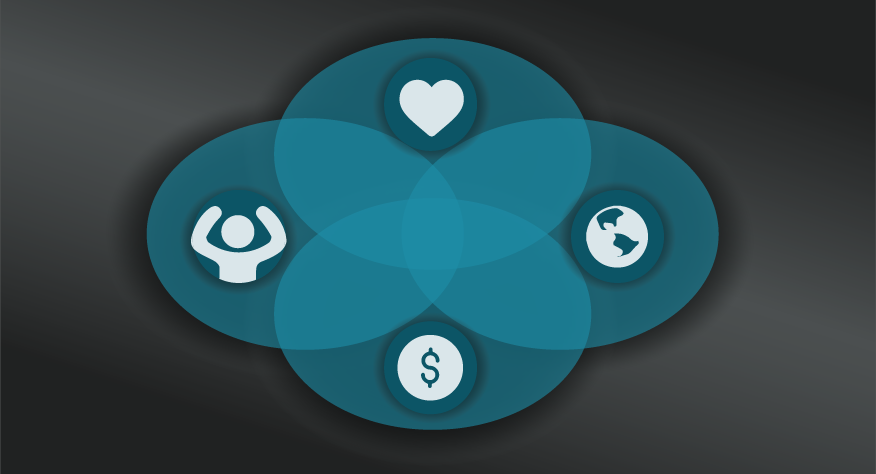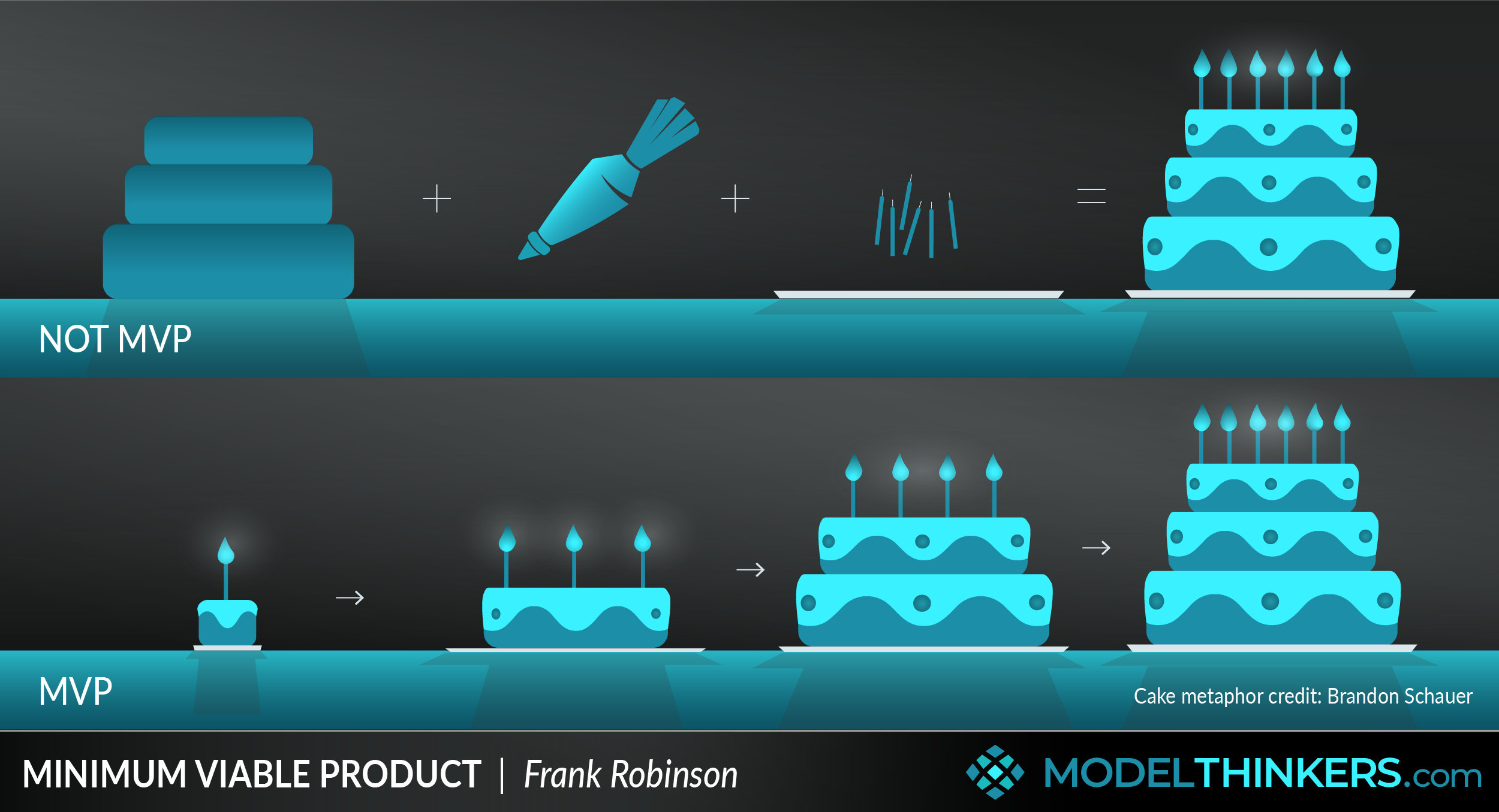
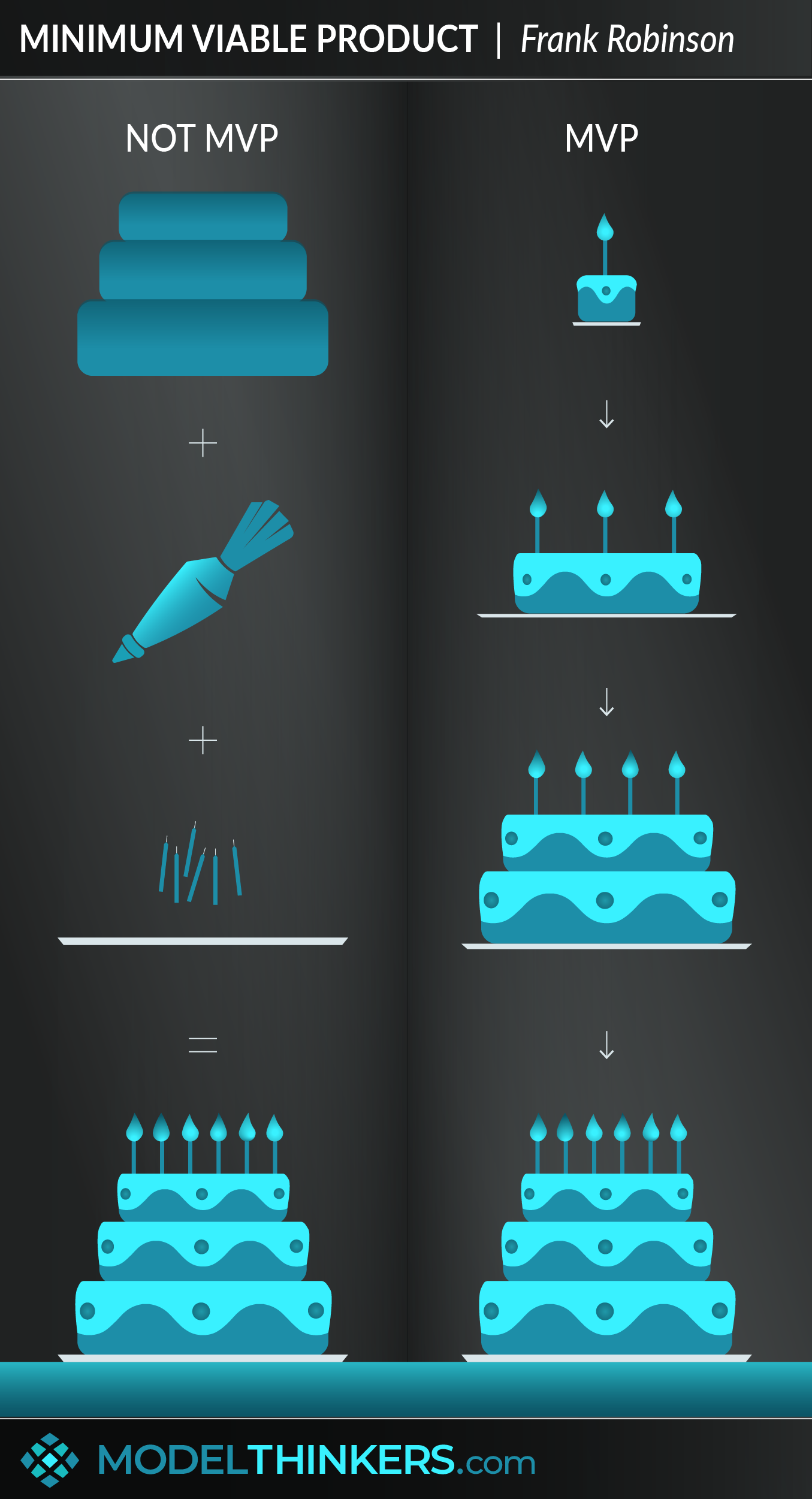
 0 saved
0 saved
 41.2K views
41.2K views








Before you invest in the three-tiered cake, why not test the market and learn more with a cupcake?
A Minimum Viable Product (MVP) is a basic version of the product that is relatively cheap and fast to build (minimum), with enough features to satisfy early customers (viable) and is used to gain feedback that will inform future iterations.
THE MVP ADVANTAGE.
MVPs are used to gain the most actual customer and market feedback with the lowest upfront investment possible. By 'actual', this differs from Prototypes or gaining feedback from test groups — MVPs are tested in a live market.
MVPs reduce costs, test the core of your product idea, and provide an early and practical customer Feedback Loop to further develop your product and grow your market.
MVP vs RAT.
An MVP is fundamentally an experiment and a way to test the hypothesis behind a product or business. There are many variations but MVPs tend to preview and test an experience – becoming a 'mini' or simplified version of the ultimate product.
An alternative approach, and one that can be incorporated into MVPs, is the Riskiest Assumption Test (RAT) which tests weaknesses upfront in contrast to the MVP approach of delivering and building on basic value. You can take a few approaches to this end including creating a landing page to capture interest before you build a product. View our RAT entry here, and consider how you might combine the two approaches.
PREVIEWING THE EXPERIENCE.
We've gone with the 'cupcake' metaphor in our graphic, which was first outlined by Brandon Schauer, and highlights the importance of ‘previewing the customer experience’, rather than just presenting isolated aspects of the most basic functionality of the final solution. That said, both approaches — of focusing on base functionality versus previewing the experience — are valid, it depends on which aspect is crucial to making that product 'good enough to sell' (ie. what makes it viable).
FROM STARTUPS TO EVERYTHING.
MVPs were popularised by the Lean Startup model as a fundamental tool for entrepreneurs and product managers, but consider how you might apply it to other areas of your work and life.
What big, complicated projects are you involved in? How might you invest the smallest resources, while providing clear value, so that you can gain feedback and iterate forward? From a large life decision like moving cities, possibly starting a new job, right through to supporting your child to start a new sport — consider how you might apply a 'MVP' mindset.
IN YOUR LATTICEWORK.
We've already pointed to strong links with Lean Startup and a related but often counterposed approach of Riskiest Assumption Test (RAT). Also consider how you can broaden your experiments with lessons from the Scientific Method, as well as considering Return on Failure and how you incorporate Prototypes and Split Testing.




- Cut to the core problem you are solving for.
Start by becoming clear about the audience you are aiming for and the problem you are solving for them. This is your underlying assumption — that you have correctly identified a pain point and that your audience will pay to solve it.
- Map out MVP features with customer experience in mind.
Use the clarity you reach via the above step to guide which features to include in your MVP. For any entrepreneur or innovator, it’s all too easy to become attached to specific future feature ideas. Committing to a MVP means identifying the most basic product that will solve the problem you are targeting and provide the experience you need to be viable. Be brutal, and continue to cut out extraneous features — they can come later, or not, with the benefit of customer feedback.
- Communicate clearly to manage expectations.
Communicate to your audience that you are launching a MVP and that you are in this for the long run — wanting to listen to their feedback and ideas in order to improve and choose what features to add. Doing this not only encourages your audience to be patient, it also encourages loyalty as they identify with being part of the ‘early adopter’ group.
- Sell it rather than just asking for thoughts.
Getting data around likes or shares are useful, but ultimately your MVP is testing whether your customers are prepared to pay for the product or services you are offering. There are options to engage with potential users who do not make a purchase but be sure that you are gaining ‘bankable’ or reliable indications of the uptake of your product.
- Design feedback loops.
Establish feedback loops that allow you to understand customers — using both qualitative (e.g. customer purchase stats) and quantitative (customer interviews) to gain an understanding of customer needs and expectations.
- Take action, then rinse and repeat
Responding to MVP feedback might lead you to lay an idea to rest, pivot towards another version of your product, or to prioritise key features moving forward. No matter how you respond, ensure that you continue with the same approach moving forward. This involves embracing an iterative product development cycle with ongoing feedback loops even beyond the MVP.
The MVP is perhaps best suited for technically-oriented products where users are willing to provide insights on how to improve the product. It may not deliver excellent results in other areas, such as consumer goods, for instance. Another challenge arises when customers' expectations have not been adequately managed — so they see an end product versus an MVP and a brand is tarnished as a result.
There is a challenge to define 'minimum'. So, if an MVP 'fails' or does not live up to expectations, the question remains — was that because it was not built out enough? Or because the underlying idea was not resonating with the audience? This is particularly a challenge with new, unexpected products or services which might need to build up in a market.
Advocates of the Riskiest Assumption Test (RAT) approach often counterpose it to MVPs, though we'd argue that they both can be used as part of a process.
Due to criticism of MVPs about lowering product quality, alternative approaches to the model have been created, such as MVE (Minimum Viable Experiment), MAP (Minimum Awesome Product), and Simple, Lovable, Complete.
Amazon.
Jeff Bezos famously began Amazon as online book retailer with a website and no stock. When the site took orders, he'd buy books from distributors then ship them to customers. This MVP approach delivered value upfront with minimal expenditure and allowed for the purchase of warehouses and stock when demand grew.
Groupon.
Now a global SAAS service, when it started Groupon took a MVP approach. There first initiative was a two-for-one pizza deal for a Chicago restaurant that was delivered through a Wordpress website. Twenty people took advantage of the deal. They expanded their offers but didn't expand their technology in the first instance. When taking orders for t-shirt colours they had to ask people to email them because they didn't set up forms. They made PDFs to represent coupons and ran a simple script to start sending them out as they gained more interest.
MVP is commonly used as part of agile methodologies such as kanban, scrum and lean thinking, and was central to the lean startup.
Use the following examples of connected and complementary models to weave minimum viable product into your broader latticework of mental models. Alternatively, discover your own connections by exploring the category list above.
Connected models:
- Agile methodology, scrum, lean thinking and kanban: which generally advocate for an iterative approach that includes a MVP.
- Design thinking: as an iterative process to achieve a MVP
- Prototypes: as a precursor to a MVP.
- Lean startup: MVP is a core element of this approach.
- Feedback loops: establishing customer feedback loops is crucial to MVP.
- Pareto principle: in helping to establish core features.
- First principles: cutting to the core of a problem to be solved and product features as a result.
Complementary models:
- Kano: perhaps the most useful model to use in defining a MVP, distinguishing between basic, performance and excitement categories with MVP focusing on basic by definition.
- RICE score, kano and impact effort grid: to establish product/ feature priorities.
- The golden circle: in establishing strategic direction for the product and underlying why.
- Split testing & A/B testing: either splitting the audience or providing two product options, even two landing pages for example.
- Zawinski’s law: the MVP approach and further iterations can help to guard against software bloating.
The MVP mental model uses negative feedback loops to improve product quality and apply just the right amount of correction to obtain a better product that is both attractive to customers and profitable.
In software development, MVP can prevent the phenomenon called software bloating (adding too many features to a product just because they are popular).
The term Minimum Viable Product was coined in 2001 by Frank Robinson and further popularised by Eric Ries via the lean startup.
Dan Olsen explores the MVP in The Lean Product Playbook here, or view Reis’ best-selling The Lean Startup here.
 My Notes
My Notes
Oops, That’s Members’ Only!
Fortunately, it only costs US$5/month to Join ModelThinkers and access everything so that you can rapidly discover, learn, and apply the world’s most powerful ideas.
ModelThinkers membership at a glance:






“Yeah, we hate pop ups too. But we wanted to let you know that, with ModelThinkers, we’re making it easier for you to adapt, innovate and create value. We hope you’ll join us and the growing community of ModelThinkers today.”



